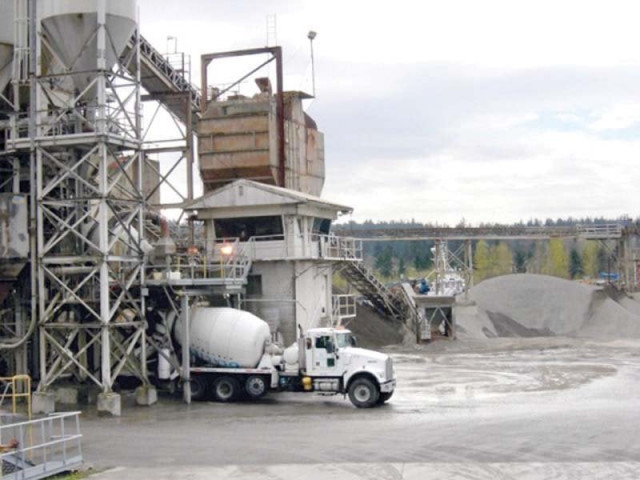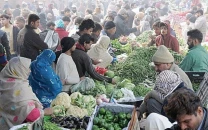Jan 2017: Cement sales almost flat as rains hinder supplies
Exports to India rise sharply, but shipments to Afghanistan fall

The factors contributing to the decline in exports include increase in fuel prices and other input costs and the most damaging was the barriers erected by the countries where cement is exported, such as anti-dumping duty. PHOTO: FILE
Domestic sales in January were recorded at 2.722 million tons while exports totalled 0.376 million tons. Total cement sales in the month stood at 3.087 million tons, edging up 0.34%, according to data released by the All Pakistan Cement Manufacturers Association. Exports to Afghanistan decreased 4.5% from 0.174 million tons in January 2016 to 0.166 million tons in January 2017.
However, shipments to India registered a healthy growth of 76% to 0.861 million tons against 0.490 million tons in January last year. Exports to India mainly went through the Wagah border and southern coast of India.
However, in the first seven months (Jul-Jan) of the current financial year, cement producers posted a growth of 9.52% in local sales compared to the corresponding period of previous year.
Export numbers were not impressive as shipments dipped 3.44% in Jul-Jan 2016-17. Overall, in the seven months, sales showed a rise of 7.45% with capacity utilisation standing at 85%.
The association spokesman expressed concern over the falling exports to Afghanistan, which stood down 10.88% in the first seven months of the current financial year.
Exports to India, however, registered a sharp increase of 79.34% during the period. Exports by sea declined 19.23% in Jul-Jan FY17.
According to the spokesman, the factors contributing to the decline in exports include increase in fuel prices and other input costs and the most damaging was the barriers erected by the countries where cement is exported, such as anti-dumping duty slapped by South Africa to protect its local industry.
In India, in order to discourage imports, the tariff was around 19% including 3% education cess, which, the spokesman said, made it difficult to compete with their manufacturers and other exporting countries, which had lower input costs.
The cement industry has embarked on a massive expansion drive to add 26.250 million tons to their annual capacity in a bid to meet the growing demand emanating in the wake of various government and China-Pakistan Economic Corridor (CPEC) projects.
Published in The Express Tribune, February 7th, 2017.
Like Business on Facebook, follow @TribuneBiz on Twitter to stay informed and join in the conversation.



















COMMENTS
Comments are moderated and generally will be posted if they are on-topic and not abusive.
For more information, please see our Comments FAQ